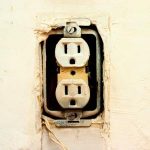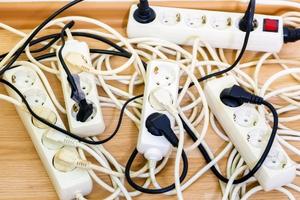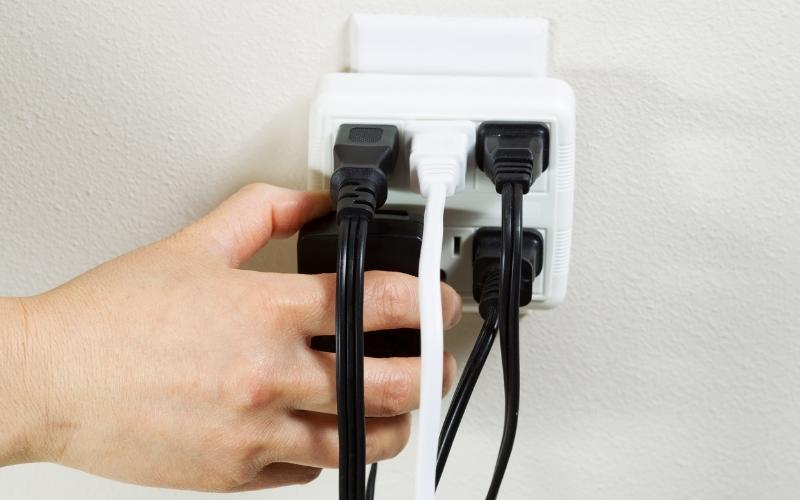There is a big difference between a warm outlet and a hot outlet. Do you know if there is cause for concern in your home?
For safety’s sake, use our guide to discover why an electrical outlet feels hot, identify when it poses a potential hazard and learn how to remedy any problems.
Frankly, there’s no better time than the present; with more people working from home and attending school online, we’re all placing greater demands on our electrical systems. The last thing you want is to experience an electrical emergency!
Should Outlets Be Hot?
No! Electrical outlets should never be hot. This is a warning sign of an electrical system problem. So, if you’ve found your electrical outlet is hot to the touch, please contact us immediately. We’ll send a licensed electrician to repair your outlets and circuits, perform a safety check and fix the problem for you.
Call Sun Electrical at 403-214-8888 Today
On the other hand, you probably don’t need to sound the alarm if you have a warm electrical outlet, but it’s still worth looking into.
Note: Dimmer switches do commonly run warm, especially when in use. If you have an overheating electrical outlet, be sure to have it checked out by an electrician.
What Causes A Hot Electrical Outlet
Why is your outlet hot? Identifying the source of the heat can be tricky, but we’ve typically found it’s attributed to one of the following culprits.
1. Overloaded Circuit
If too many items require power from the same circuit, overload occurs. Essentially, it’s more electricity than it can handle. When excessive demand is placed on a singular electrical circuit breaker, outlets become hot to the touch and may trip the circuit breaker inside your electrical panel. That’s a sign you may need to replace your electrical panel.
Unplug and move some items to a different circuit altogether to reduce demand on the problem circuit.
Another clue that points to circuit overload is when a Ground-Fault Circuit Interrupter (GFCI) trips. A GFCI outlet monitors the electrical current flowing through the wires. When it senses any variation from the standard current (the variation is the “fault” it detects), an internal switch instantly shuts off the flow of electricity in the outlet. Unfortunately, a standard outlet doesn’t have this safety sensor and can become dangerously hot.
2. Faulty Wiring
Loose wiring and corroded wires can cause a bad connection, resulting in extra heat building up inside your outlet—you might even see sparks when you plug in appliances. One sign you can look out for is if your light bulbs keep burning out immediately.
Be cautious, this is a fire hazard! To fix this issue, you may need to replace your outlets (contrary to popular belief, electrical outlets do not last forever), or it may be time to upgrade the wiring in your Calgary home.
3. Appliance Chargers and Wiring
If your outlet feels warm or hot instead of normal room temperature when small appliances (like cell phone chargers) are plugged in, it may be the charger or the device—not the outlet—that is the problem. Why? Because many everyday electrical devices use transformers to change voltage inputs to different voltage outputs. (See below if the plug itself is overheating.)
Larger, more heavy-duty appliances, like those used in the kitchen, require more power. A dedicated circuit may be required, or you may need a licensed electrician to perform an electrical outlet upgrade to increase some outlets from 15A (rated for 15 amps) to 20A. This is an involved process that also requires wiring upgrades.
4. Overloading of Power Strips & Extension Cords
We understand the need to use a power strip to extend the power of one outlet to several outlets. But, unfortunately, we frequently see too many power strips in use at once or come across at least one outlet with multiple extension cords plugged into it, causing the outlet to heat up.
Actions like these pose an electrical fire hazard because outlets are designed to handle a limited amount of power. Therefore, you should always purchase power strips with life-saving surge protection or reach out to an electrician who can help you safely distribute power where it is needed throughout your home.
5. Faulty Plugs
When a plug overheats, the outlet may feel warm as well—or fail to work at all.
Have you noticed that an outlet is not working in one particular room? Check the condition of the plugs and the cords on the electrical devices plugged into the problem outlet. If the cords are fraying or damage to the prongs exists, the root cause is the device vs. the outlet.
Ensure Every Outlet In Your Home Is Safe
Every professional electrician at Sun Electrical can repair your faulty electrical outlets and install new outlets, share advice about how to prevent outlets from overheating, perform routine safety checks and inspections, and safely wire your entire home or any rooms you are renovating.
We’re ready to help make your home the safe haven it should be.





